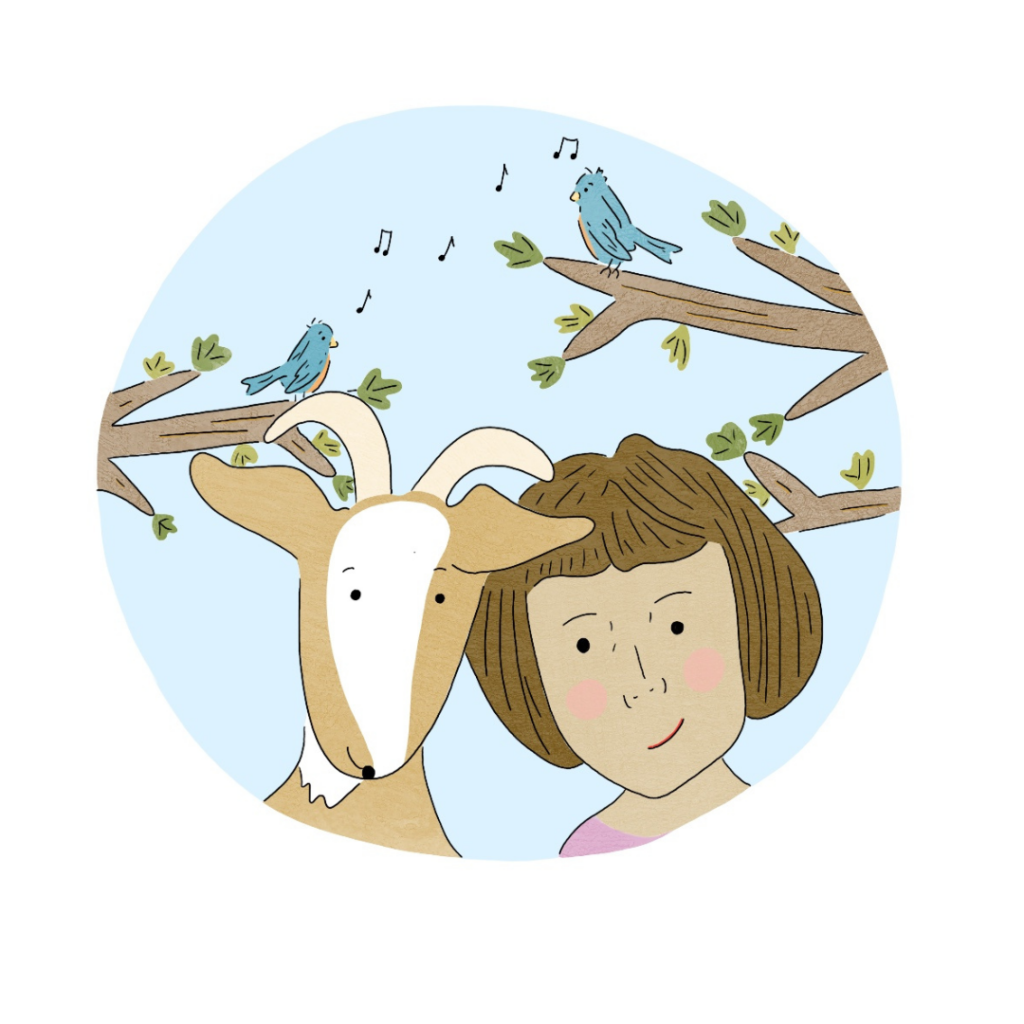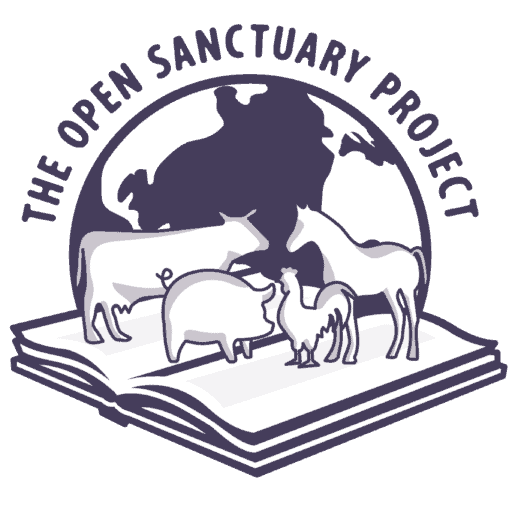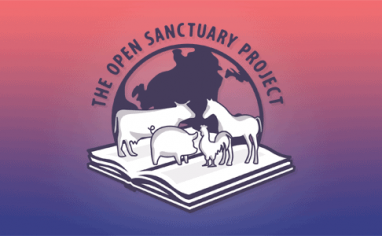
This resource has been fully reviewed and updatedA member of The Open Sanctuary Project’s staff has given this resource a full review and provided updates where necessary. by a member of The Open Sanctuary Project team as of August 1, 2023.
Introduction
As animal advocates, one of our common overarching educational goals is to help folks who visit our advocacy spaces form a deeper understanding and appreciation of nonhuman animals and their importance as members of our global community. One of the ways we can do this is by inviting children into our animal sanctuary spaces to nurture their instinctive interconnectedness with farmed animalsA species or specific breed of animal that is raised by humans for the use of their bodies or what comes from their bodies.. In Early Elementary Lesson One, young sanctuary visitors are given the opportunity to do this as they are guided through an introductory tour of your sanctuary. In the first part of the lesson, the learners will engage in a conversation about any experiences they’ve had with farmed animals. Then, they will go on a tour of your sanctuary to learn about some of the residents and discuss their stories from exploitationExploitation is characterized by the abuse of a position of physical, psychological, emotional, social, or economic vulnerability to obtain agreement from someone (e.g., humans and nonhuman animals) or something (e.g, land and water) that is unable to reasonably refuse an offer or demand. It is also characterized by excessive self gain at the expense of something or someone else’s labor, well-being, and/or existence. to sanctuary. The learners will then play “The Happy vs. Sad Game” to identify some of the basic things farmed animals need in order to live happy and healthy lives, as well as some of the things that are harmful for farmed animals. This lesson plan is the first part of a multi-part sanctuary education program. It can be used by sanctuary educators and representatives as a stand-alone lesson or as part of a longterm program with Early Elementary Lessons Two, Three, and Four. If you are interested in exploring the full lesson plan, please scroll to the bottom of this resource for the free downloadable version!
Some Important Things to Consider
Although there is no one approach to teaching animal liberationA social movement dedicated to the freeing of nonhuman animals from exploitation and harm caused by humans. in a sanctuary setting that works for everyone, our hope is that you can adapt this lesson and all subsequent educational lessons, activities, and programs we create to address your sanctuary and audience’s specific needs. Here are some things to consider as you develop and adapt them, no matter what age group you are working with:
Understand Positionalities
Our position within society informs our attitudes towards issues like animal liberation. Use this understanding to explore the possibility that some things within the animal liberation movement are problematic or inaccessible for some people. You can also use this understanding as an opportunity to grow.
Think About Intersectional Issues
It can be impactful to carefully highlight the interconnections between farmed animalA species or specific breed of animal that is raised by humans for the use of their bodies or what comes from their bodies. exploitation and other social justice and environmental issues whenever possible. See our resource “The Significance of Humane Education in a Sanctuary Setting” for more information on this topic and why it’s important.
Understand the Power of Language as a Tool that Shapes the Way We Think and Behave
- Model your sanctuary’s message through anti-oppressive language and inclusivity:
- Invite people to share their pronouns (if they feel comfortable doing so).
- Consider providing or establishing a non-verbal signal that learners can use if they are uncomfortable and need space.
- We recommend using terms like “farmed animal” vs. “farm animal”, as farming is the means of exploitation these species have been subjected to, and is not an inherent quality of them. Please see our resource “The Importance of Language Choices at Your Animal Sanctuary” for more information on intentional language choice.
- Utilize respectful, open, honest dialogue:
- Share your perspective, then ask what everyone else thinks and listen to them. Avoid one-on-one debate!
- Be sensitive to diverse opinions, experiences, and feelings. Allow learners to process what you’re discussing together.
- Validate your audience’s efforts, acknowledge where they’re coming from and gently guide them towards a more accurate understanding of the topic you’re discussing.
- Reserve judgment and focus on the causes and consequences of a behavior. Examples:
- Let’s think about why people do x.
- Why do you think someone would participate in x?
- What are the consequences to them [the animals]? People? The local community? The planet?
- How do you think they [the animals] feel or want to be treated?
- What are some ways to prevent it?
Help Foster Empathy
Please see our resource “Fostering Empathy Towards Farmed Animals” for more information on modeling empathetic behavior, reframing the farmed animal narrative, building perspective-taking, and nurturing self-empathy.
Make and Allow Modifications for People with Disabilities
Please see our resources “ADA Compliance and Accessibility for Animal Sanctuaries”, “Accessibility for Deaf and Hard of Hearing Community Members at Your Animal Sanctuary”, “Accessibility for Blind and Visually Disabled Community Members at Your Animal Sanctuary”, and “Accessibility for Folks with Physical Disabilities at Your Animal Sanctuary” for more information on this very important topic.
Make and Allow Modifications for Different Age Groups
Present information in a way that is sensitive to the cognitive and emotional development of your audience, which is often dependent on their age.
Connect the Learning Objectives to Your State’s Common Core Learning Standards When Necessary
- Get familiar with your state’s education standards and the curriculum of the school or organization you’re working with.
- Work with teachers to tailor your lessons to fit their subjects and content standards.
- Many state education standards imply “big ideas”: concepts, themes, ongoing debates and points of view, theories, paradoxes, underlying assumptions, recurring questions, principles, etc. You can identify specific facts, concepts, and skills in the state/school/class content standards and then teach them in the context of exploring bigger ideas like animal exploitation and animal liberation.
Understand the Importance of Sanctuary Education Programs
Though it can be challenging to make a significant impact in one visit, be mindful that children and teachers are being offered enrichment programs from a wide variety of community organizations, many of which are directly involved in animal exploitation. Take-away: Your sanctuary education program is important! It offers people a space outside of the dominant cultural paradigm where they can feel less constrained and more open to the ideas of animal liberation.
Offer Extended Learning Resources
Offer audience-appropriate extended learning resources (e.g. documentaries, books, articles, art, etc.) that add to and support your program. Provide resources that reflect the experiences and interests of your audience as well as resources written and created by people currently being marginalized by oppressive social structures (e.g. disabled people, women, people of color, indigenous people, etc.).
Download The Lesson Plan
Enter either your organization’s name or your name and email below to download the lesson plan!
We promise not to use your email for any marketing purposes!
Would you prefer to access this download in a different way? Contact us and let us know!
Our Inspiration For This Lesson Plan
The “Happy vs. Sad” Game is an adaptation of “The Game of Good and Bad”, a learning activity about bees that was created and shared by Tânia Regina Vizachri, Adriana Regina Braga, and Luís Paulo de Carvalho Piassi in the book Teaching Liberation.
Sources:
Understanding by Design: Expanded Second Edition | Grant Wiggins and Jay McTighe






